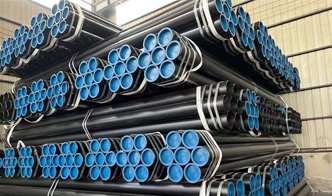Current location:
forged threaded fittings
Date:2025-08-16 16:36:59 Read(143)

Understanding DIN 2065 Flanges A Comprehensive Overview Flanges are a critical component in many engineering and construction applications, serving as a means of connecting pipes, valves, pumps, and other equipment within a piping system. Among the various standards for flanges, DIN 2065 flanges stand out due to their unique characteristics and applications. This article will explore the essentials of DIN 2065 flanges, their specifications, advantages, and common applications. What is DIN 2065? DIN 2065 refers to a standard established by the Deutsches Institut für Normung (German Institute for Standardization), which sets the guidelines for designing flanges and their accompanying fittings. Commonly, this standard is utilized in industrial applications, particularly in Germany and other parts of Europe, where such specifications ensure compatibility and reliability within piping systems. The DIN standards are globally recognized for their emphasis on quality and safety. Specifications of DIN 2065 Flanges DIN 2065 flanges are typically produced from various materials, including carbon steel, stainless steel, and alloy steels, allowing for a range of pressure ratings and temperature tolerances. The standard encompasses several types of flanges, including 1. Weld Neck Flanges Known for their high strength and ability to withstand high pressures, these flanges have a tapered neck that allows for a smooth transition between the flange and the piping. 2. Blind Flanges These flanges do not have a bore, making them ideal for sealing off the ends of pipes or tanks, thus preventing leakage and contamination. 3. Slip-On Flanges These flanges are designed to slide over the pipe for easy installation and welding. They provide a cost-effective solution for low-pressure applications. 4. Socket Weld Flanges Designed for small diameter pipes, these flanges allow for a smooth internal flow and are often used in high-pressure applications. 5. Threaded Flanges These allow for easy connection without the need for welding, making them suitable for cases where welding is impractical. Each type of DIN 2065 flange is characterized by specific dimensions, such as diameter, thickness, and bolt hole patterns, which are strictly defined by the standard. din 65 flange Advantages of DIN 2065 Flanges One key advantage of DIN 2065 flanges is their ability to maintain integrity and leak-tightness under high-pressure conditions. The rigorous testing and standards associated with DIN flanges ensure that they can endure extreme conditions typical in industrial applications. Moreover, the availability of a wide range of materials means that designers can select specific flanges tailored to their environmental requirements—whether they need corrosion resistance, temperature resistance, or strength. This flexibility allows for greater efficiency and safety in a variety of applications. Common Applications of DIN 2065 Flanges DIN 2065 flanges are widely used across a range of industries, including - Oil and Gas In exploration, extraction, and refining processes, the integrity of piping systems is crucial, making high-quality flanges integral to the infrastructure. - Chemical Processing The chemical industry relies on dependable connections in its piping systems where various chemicals are transported, necessitating leak-proof and corrosion-resistant flanges. - Water Treatment Flanges are essential in connecting various components of water treatment facilities, ensuring efficient flow and prevent contamination. - Power Generation In power plants, flanges are used throughout the system, from boiler connection to turbine systems, requiring high endurance under varying temperatures and pressures. Conclusion In summary, DIN 2065 flanges are an essential component of many industrial piping systems, renowned for their reliability, durability, and adherence to stringent quality standards. Understanding the specifications and applications of these flanges allows engineers and designers to select the appropriate components for their systems, ensuring safety and efficiency. As industries continue to evolve and demand higher performance standards, the significance of standards like DIN 2065 will only grow, cementing their role in modern engineering and construction practices.
Share:
Previous: Exploring the Properties and Applications of Metal Tubes in Various Industries
Next: Flange Manufacturing Solutions for High-Quality Industrial Applications and Custom Designs
Kind tips:The above content and pictures are compiled from the Internet and are for reference only. I hope they will be helpful to you! If there is any infringement, please contact us to delete it!
You may also like
- Flange Slip-On Design for 150 Class Pipe Connections and Applications
- Creating a title similar to ASTM A106 Gr B with approximately 15 words.
- Efficient Vertical Dewatering Pump Solutions for Enhanced Water Management and Construction Projects
- astm a106 grb pipe specifications
- Dimensions and Specifications for 1 Inch Pipe Flange Design and Applications
- Creative Designs for 3D Bend Pipes in Modern Engineering Applications
- Current Pricing Trends for Stainless Steel Square Pipes per Kilogram in 2023
- Exploring the Characteristics and Applications of 5% Flange Components in Engineering
- Durable and Versatile 1.5-Inch Galvanized Pipe for Reliable Plumbing and Construction Applications